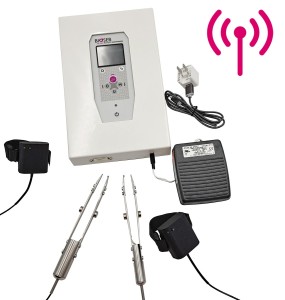Authors
V. Kayser, I.E. Elfassi, B. Aubel, M. Melfort, D. Julius et al.
Lab
University Pierre et Marie Curie-Paris 6, Faculté de Médecine Pierre et Marie Curie, IFR 70 des Neurosciences, UMR S677, Paris, France.
Journal
Pain
Abstract
Extensive studies in rodents suggest that serotonin (5-HT) modulates nociceptive responses through the stimulation of several receptor types. However, it remains to demonstrate that these receptors participate in the control of nociception under physiological conditions. Pain behaviors of mutants which do not express 5-HT1A, 5-HT1B, 5-HT2A or 5-HT3A receptors, or lacking the 5-HT transporter, compared to paired wild-type mice of the same genetic background, were examined using validated tests based on different sensory modalities. Mechanical (von Frey filaments, tail pressure, tail clip tests), thermal (radiant heat, 46 °C water bath, hot-plate test) and formalin-induced nociception were determined in 2- to 3-month-old males. 5-HT1A knock-out mice differed from wild-types by higher thermal sensitivity (hot-plate test only), and 5-HT1B knock-out mice by higher thermal and formalin sensitivity. Both 5-HT2A and 5-HT3A knock-out mice differed from wild-types by a dramatic decrease in the formalin-induced nociceptive responses for phase II (16–45 min after injection/inflammatory phase). In contrast, neither mechanical, thermal nor formalin-induced nociception differed between mutants lacking the 5-HT transporter and paired wild-type mice. Although differences in spontaneous locomotor activity in 5-HT1B_/_ (increase) and 5-HT3A_/_ (decrease) knock-out mice versus paired wild-types might have confounded differences in nociception, acute 5-HT receptor blockade by selective antagonists was found to replicate in wild-type mice the effects on pain behavior, but not on locomotor activity, of the respective gene knock-out in mutants. These results support the conclusion that the complex control of pain mechanisms by 5-HT, acting at multiple receptors, is physiologically relevant in mice.
BIOSEB Instruments Used
Rodent pincher - analgesia meter (BIO-RP-M)
Source :
http://www.sciencedirect.com/science/article/pii/S0304395906006658

 Douleur - Allodynie/Hyperalgésie Thermique
Douleur - Allodynie/Hyperalgésie Thermique Douleur - Spontanée - Déficit de Posture
Douleur - Spontanée - Déficit de Posture Douleur - Allodynie/Hyperalgésie Mécanique
Douleur - Allodynie/Hyperalgésie Mécanique Apprentissage/Mémoire - Attention - Addiction
Apprentissage/Mémoire - Attention - Addiction Physiologie & Recherche Respiratoire
Physiologie & Recherche Respiratoire




































 Douleur
Douleur Système Nerveux Central (SNC)
Système Nerveux Central (SNC)  Neurodégénérescence
Neurodégénérescence Système sensoriel
Système sensoriel Système moteur
Système moteur Troubles de l'humeur
Troubles de l'humeur Autres pathologies
Autres pathologies Système musculaire
Système musculaire Articulations
Articulations Métabolisme
Métabolisme Thématiques transversales
Thématiques transversales Congrès & Meetings
Congrès & Meetings 